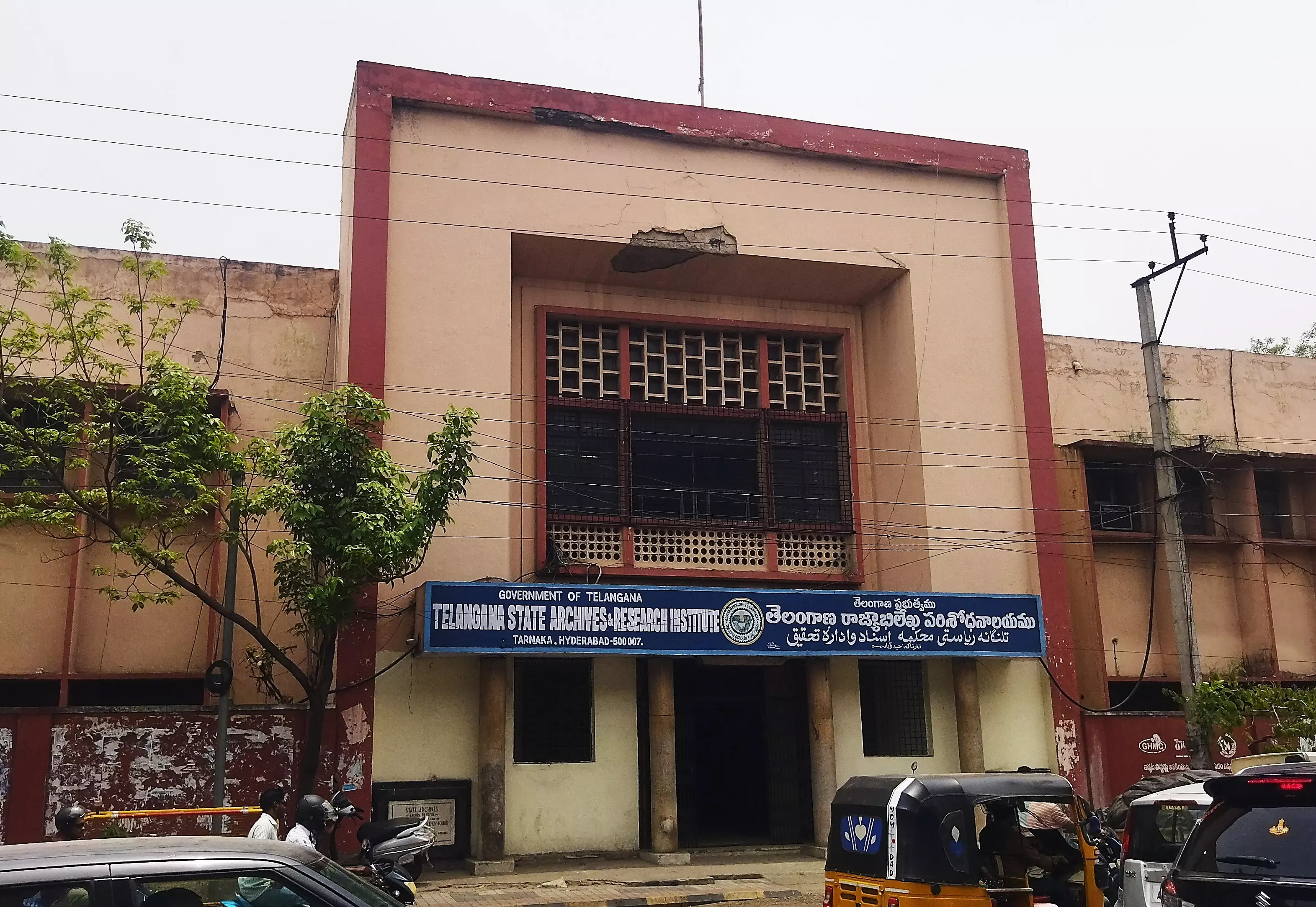A decade after bifurcation of the Telugu state, one of the matters recently came to completion was the division of the state’s archives. What was formerly AP State Archives, became Telangana State Archives and Research Institute in 2018. Andhra Pradesh was given a separate office at Manglagiri in Guntur.
The Telangana archive continues to run from the building at Tarnaka constructed in 1965. The prominent art-deco architectural style fails to make an impact on passersby as they are introduced to dust and an unpatched portion of the façade. The wide stairs, hallmark of both art-deco and Nizamesque architecture, are stacked with old broken chairs.

The director’s office on the first floor seems empty as a massive room is only housed by the director’s table and chairs. Dr Zareena Parveen, the director, is an scholar in archival science and manuscriptology. Holding fort, she has guided many a scholars and researchers delving into the primary records.
“We boast of about 43 million rare and historical records, some even dating back to 1406 AD, ranging from the Bahmani, Qutb Shahi (1581-1687) and Adil Shahi (1569-1686) eras,” she said. The archives also house an international series of Mughal paper manuscripts (1628-1707) and millions of records from the Asaf Jahi period (1724-1948). “About 80 per cent of these records are in Persian and Urdu.
Many records are written in the oldest script of Persian—wherein the lack of nuktas or dots makes it extremely difficult to re.
















